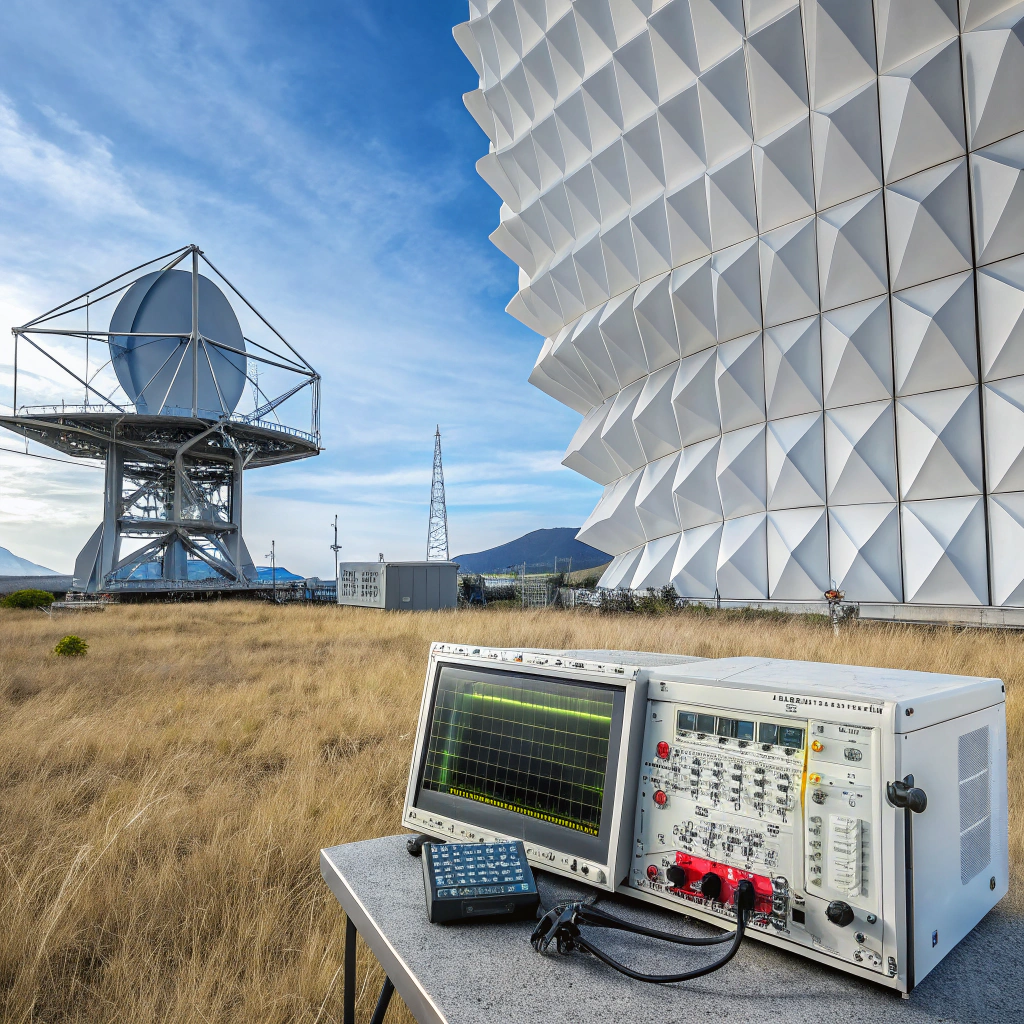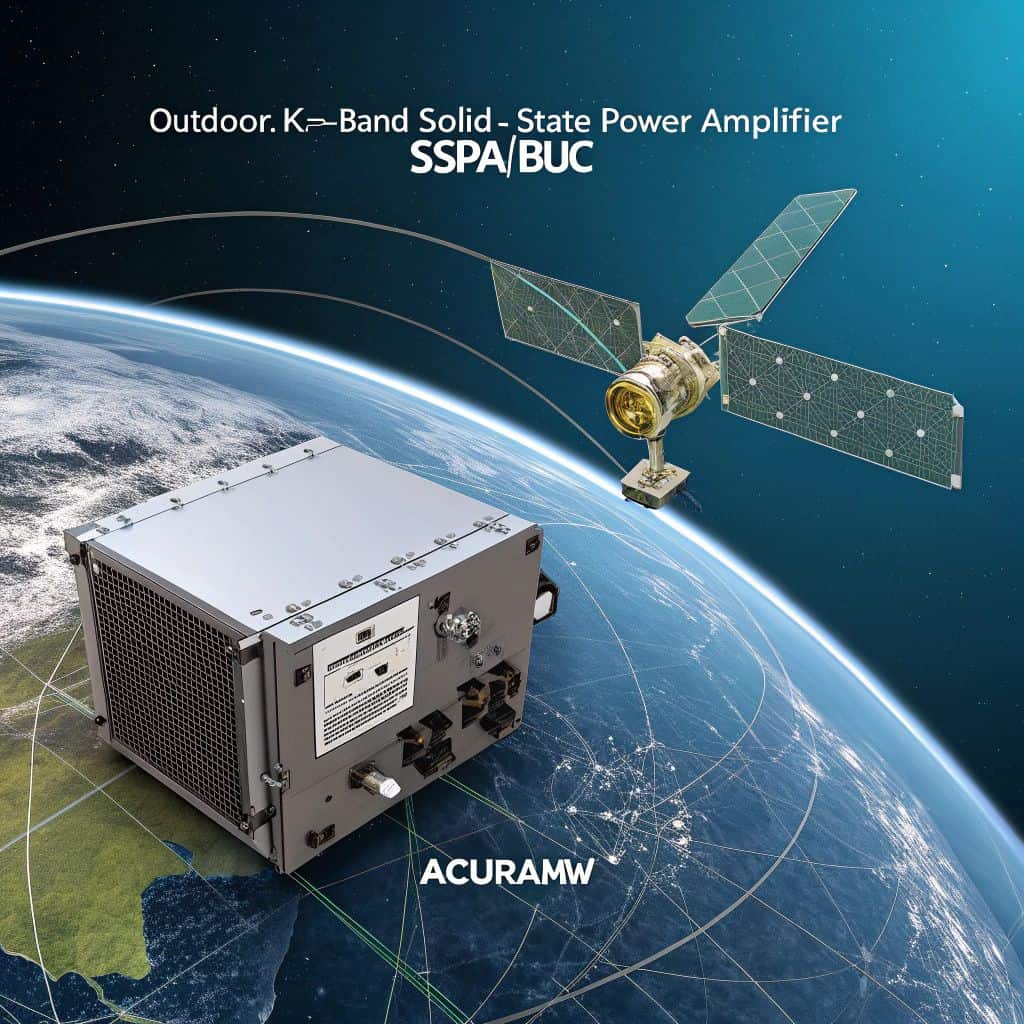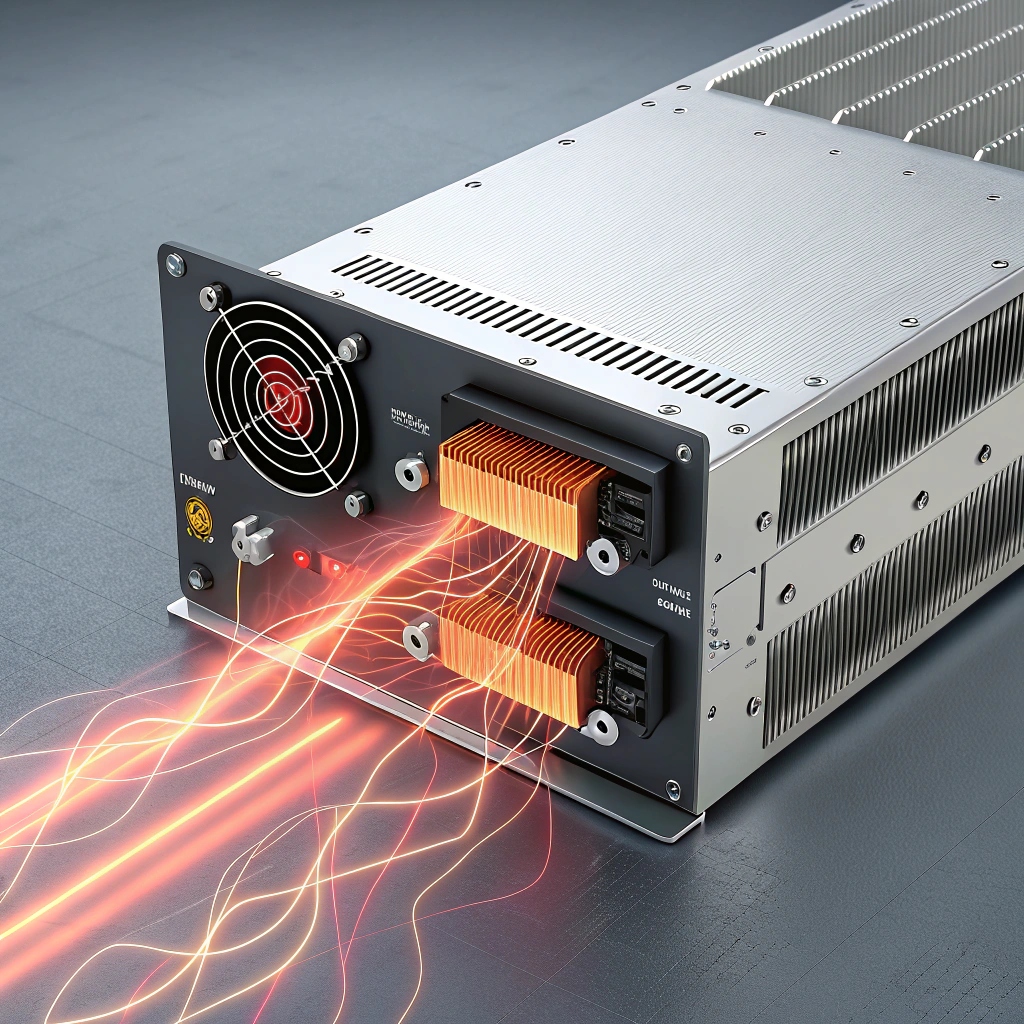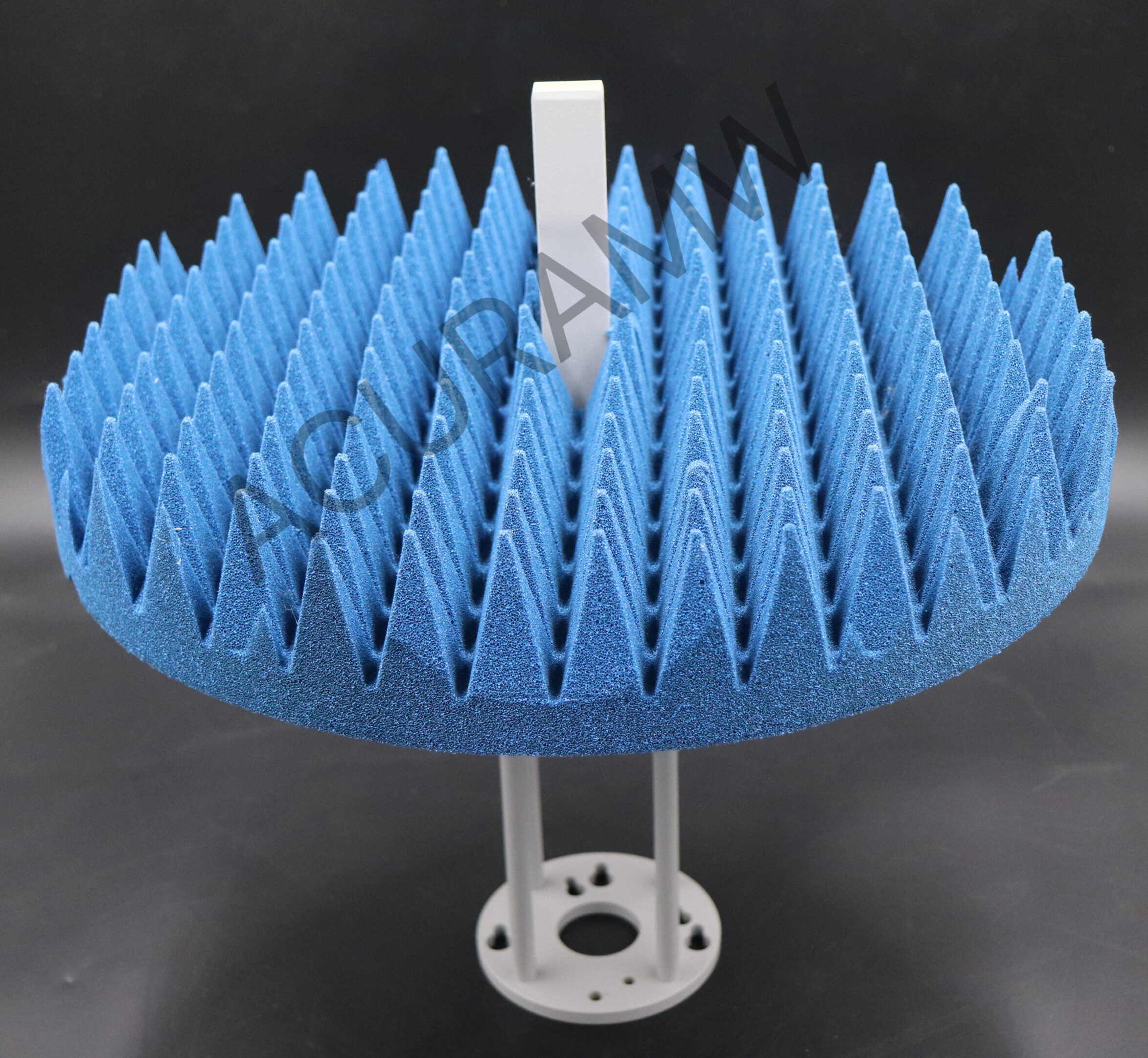What's the difference between the general lens horn antenna and spot-focusing lens horn antenna?
You need high gain and clean fields. Your chamber is tight. I have been there. The right lens horn choice can save time, cut cost, and lift confidence.
A general lens horn collimates the horn’s wavefront to make a uniform far-field beam. A spot-focusing lens horn concentrates energy to a small focal spot at a set distance. Choose collimation for area coverage; choose focusing for high field in a small region.
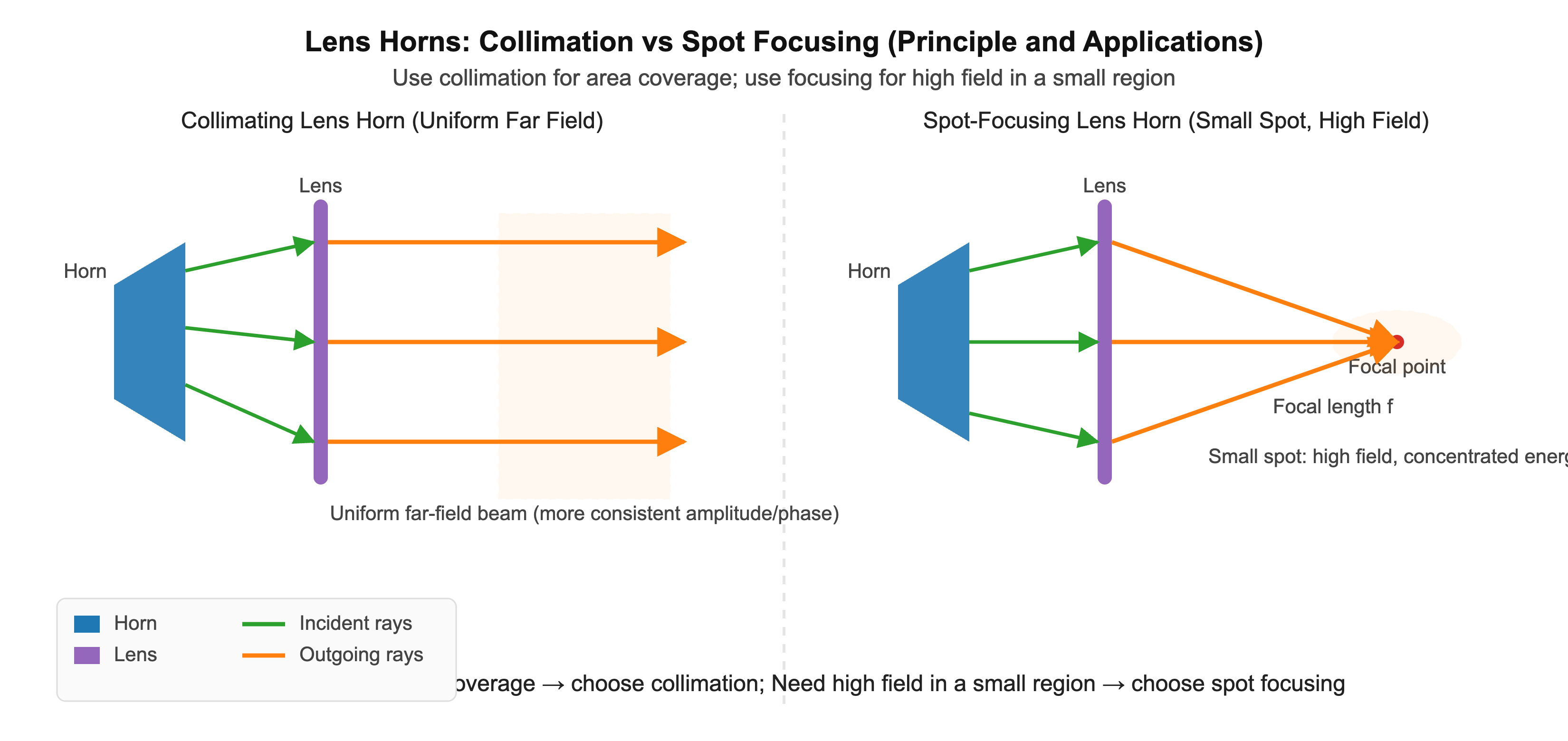
Lens Horn Antenna Comparison
I will keep this simple and practical. I will show how each one works, what each one contains, where each one shines, and how I pick between them in real projects.
How does a lens horn antenna work?
You want a narrow, clean beam without a huge reflector range. You worry about sidelobes and quiet zone size. I faced the same issue in my first compact range build.
A lens horn uses a dielectric lens in front of a horn to flatten the phase across the aperture. This collimates the beam, raises directivity, and reduces phase error, creating a wider, usable quiet zone at a shorter range than a bare horn.
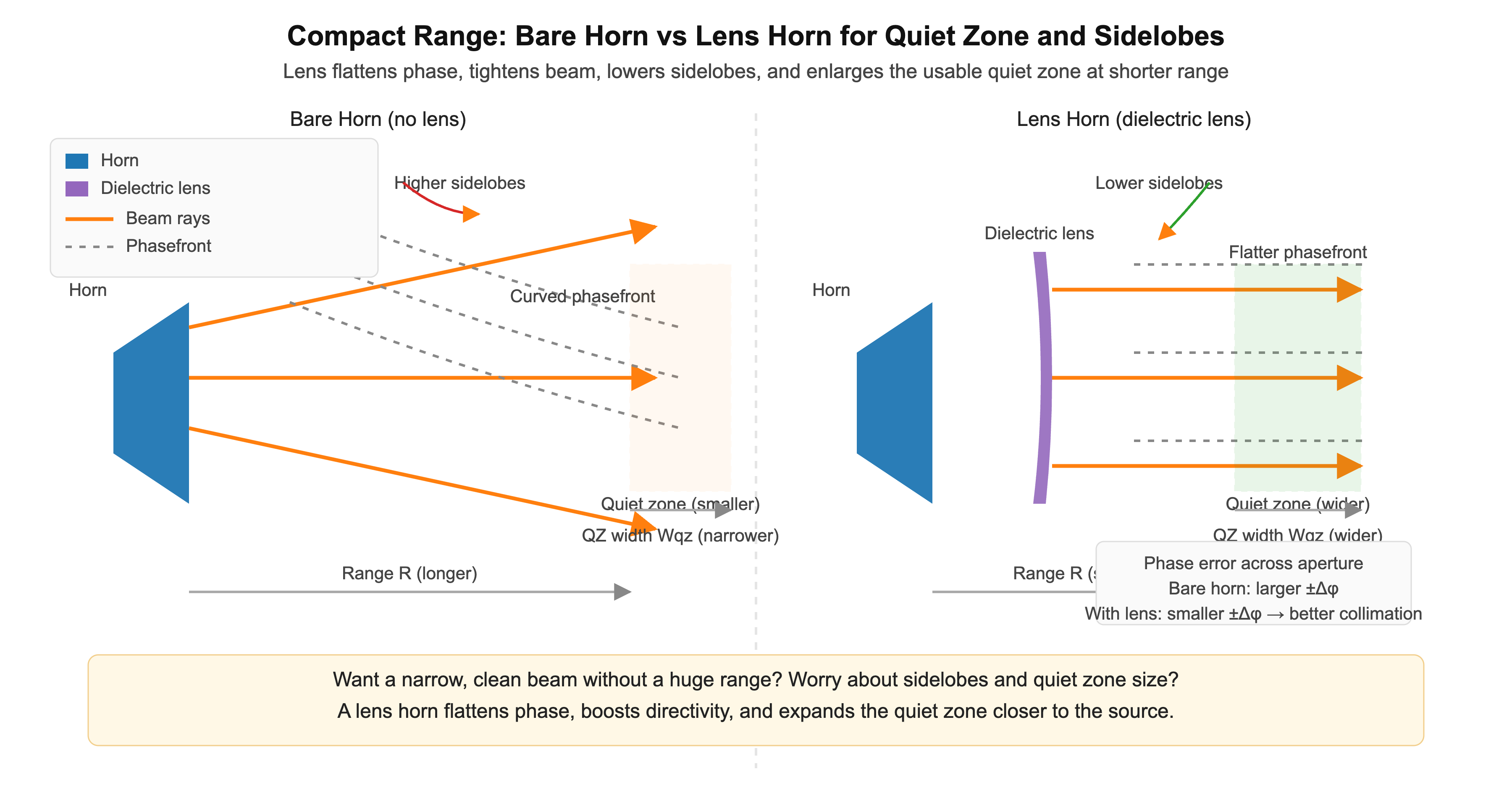
Compact Range_Bare Horn vs Lens Horn for Quite Zone and Sidelobes
Wavefront flattening
A pyramidal or conical horn launches a spherical or quasi-spherical wavefront. The dielectric lens1 adds a spatially varying delay. The center slows less or more than the edges, based on the design. After the lens, the phase across the aperture is flatter. The beam becomes more parallel. I use this when I need a stable far-field approximation in a compact path.
Phase and aperture
The useful aperture increases with the lens diameter. The phase error2 across that aperture drops. This raises gain and lowers sidelobes. The effect is frequency dependent. Broadband designs use low-dispersion materials and shaped profiles. I confirm phase with a planar scan and check the −1 dB amplitude taper.
Practical notes
Alignment matters. A small tilt ruins the phase planarity. I use shims and a rigid mount. I also keep the lens clean and dry. Water on the face changes permittivity and detunes the lens.
| Lens type | Pros | Cons | Typical bands |
|---|---|---|---|
| Dielectric, homogeneous | Simple, robust | Narrower bandwidth | L–K |
| Shaped (hyperbolic) | Better collimation | Harder to machine | X–W |
| Graded index (GRIN) | Wider bandwidth, lighter | Complex fabrication | mmWave |
How does a spot-focusing lens horn antenna work?
You need very high field on a small target. You do not want to crank the amplifier to the limit. I had this need for a lossy panel test.
A spot-focusing lens horn turns the horn’s output into a converging beam. Energy focuses at a designed focal distance. On-axis gain rises near the focus, creating strong local fields for small samples or tight OTA setups.
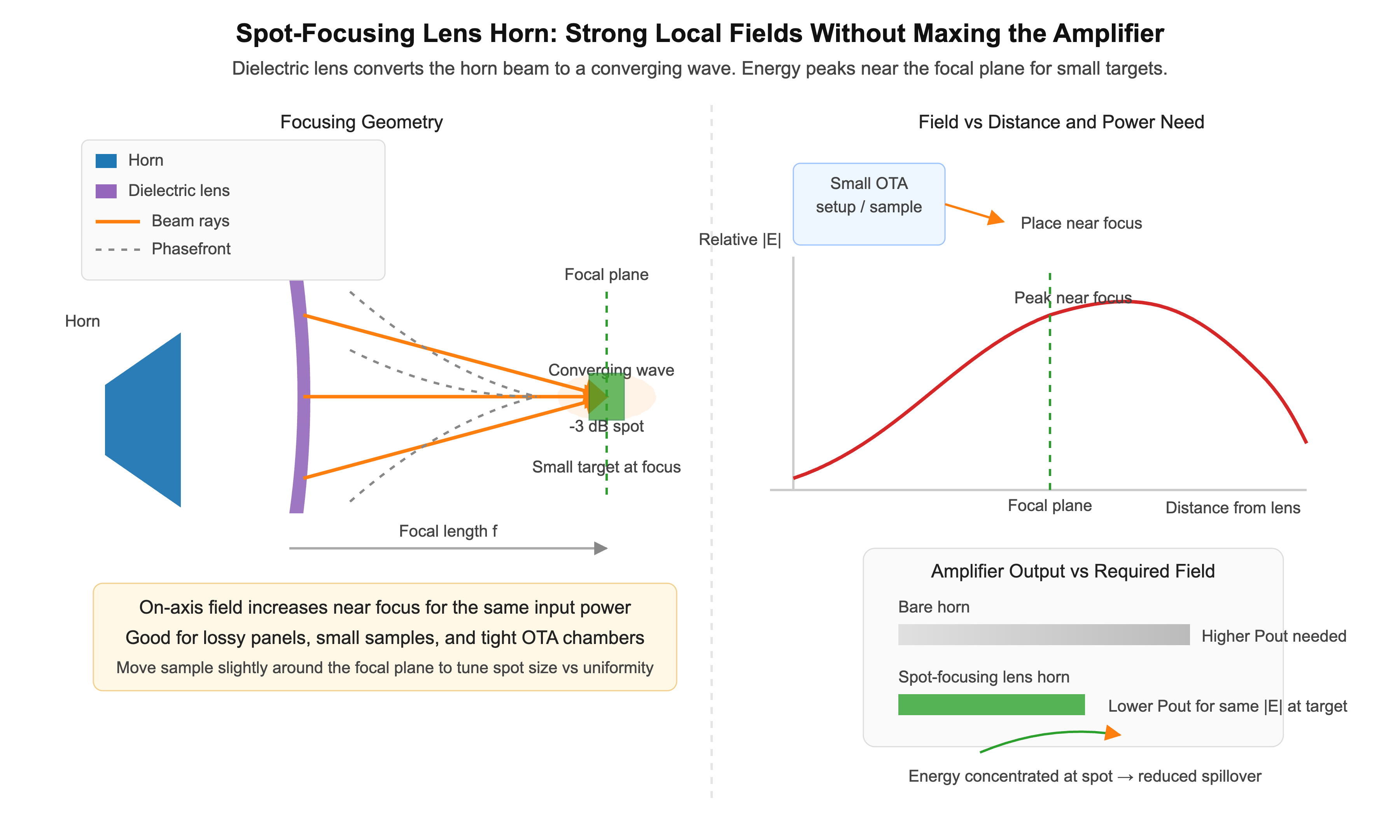
Spot-Focusing Lens Horn- Strong Local Fields Without Maxing the Amplifier
Focal behavior
The lens is shaped to create a controlled path-length difference that forms a near-field focus. The focus has a waist size that scales with wavelength and lens F-number. As frequency increases, the spot shrinks in physical size. I measure the spot by scanning a small probe around the nominal focus.
Trade-offs
You gain peak field at the spot but lose uniformity away from it. Depth of focus is limited. If the sample moves a few wavelengths, the field drops. Sidelobes can rise off-axis. Thermal load can rise at the focal region. I plan for absorber around the target to tame spillover.
Alignment
Focus demands tight alignment and accurate standoff. I lock the lens-to-sample distance with a non-metallic frame. I use a laser pointer coaxial with the horn to repeat placement. A small tilt shifts the waist. A small gap error defocuses the spot. I note this in my test plan.
The spot-focusing lens horn antenna uses phase correction to achieve excellent focusing performance with minimum antenna size, so that the beams converge at the designed focus to form a focal spot. It supports both linear and circular polarized waveforms, and the focal length and spot size can be customized. The spot-focusing lens horn antennas are especially useful when focusing beam is required with short focal length. When the focal spots of the two spot-focusing lens antennas are coincident, the transmission loss between the two antennas is minimal. Therefore, these antennas are widely used in the field of free-space method material characterization testing to study the microwave transmission and reflection properties of target substances.
| Parameter | Effect on spot | Practical note |
|---|---|---|
| Focal length (f) | Longer f = larger spot | Easier placement, lower peak field |
| Lens diameter (D) | Larger D = smaller spot | Heavier, tighter alignment |
| Frequency (f0) | Higher f0 = smaller spot | Material dispersion matters |
| Material εr | Higher εr = stronger bending | Watch loss and bandwidth |
| F-number (f/D) | Lower = tighter focus | Shorter depth of focus |
What does a lens horn antenna consist of?
At first glance, one might imagine a lens horn as just a horn and a disk, but in practice, the assembly involves several additional components to ensure repeatability and safety.
A lens horn includes a horn feed, a dielectric lens, a rigid, aligned mount, and often a radome or baffle. Optional absorbers, chokes, or polarizers refine sidelobes, bandwidth, and cross-pol.
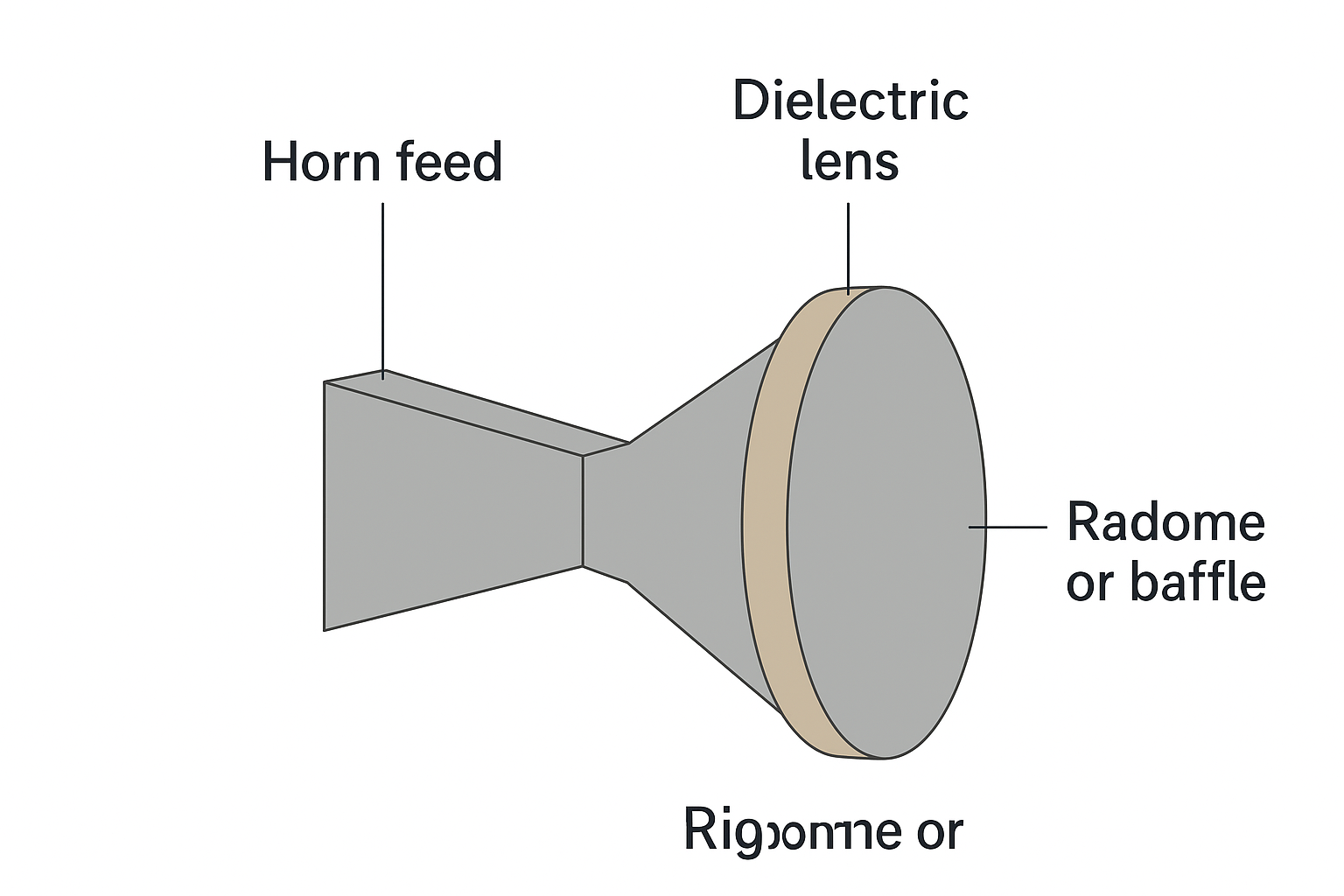
Lens Horn Components
Core parts
The horn sets initial illumination. The lens shapes phase and amplitude. Their spacing defines the final pattern. I pick horn flare to match the lens diameter for a smooth edge taper. I avoid over-illumination to control spillover and sidelobes.
Mechanical stack
The mount keeps the lens centered and square to the horn axis. It must be stable across temperature. I use low-CTE plastics or composites. Fasteners stay out of the aperture. I add reference pins for repeatable assembly. A thin radome can protect the lens outdoors, but I check its effect with a quick VSWR sweep.
Optional elements
Edge absorbers reduce rim diffraction. A choke ring can lower sidelobes. Polarizers rotate or convert polarization. I add a sighting aid for alignment in the field. Cables route away from the aperture to avoid pattern skew. I write down torque values so technicians can rebuild it right.
| Component | Function | Common materials |
|---|---|---|
| Horn feed | Launch field | Aluminum, copper |
| Dielectric lens | Phase correction | PTFE, HDPE, Rexolite |
| Mount/spacers | Alignment and rigidity | G10, POM, CFRP |
| Radome/baffle | Protection, spillover control | Thin HDPE, absorber |
| Choke/absorbers | Sidelobe control | Eccosorb, machined |
What are the main applications for the general lens horn and the spot-focusing lens horn separately?
You may test many things with one antenna. I tried that. It often wastes time. Each style has places where it wins big.
Use a general lens horn for uniform quiet zones, chamber illumination, and far-field approximation. Use a spot-focusing lens horn for material characterization, mmWave OTA, NDT, and any task needing peak local field.
General lens horn applications
I use general lens horns to build a flatter field over a plane. This helps in EMC pre-compliance, radar target simulation, and RCS work in compact ranges. The collimated beam fills a test zone with better uniformity than a bare horn. It also reduces chamber length versus reflector ranges.
Spot-focusing applictaions
I choose spot focusing when the device or sample is small. Think dielectric sheets, coatings, or small antennas. In mmWave OTA, I focus energy onto the DUT to improve SNR without blasting the whole chamber. In power density tests, I can hit a threshold field with less amplifier power.
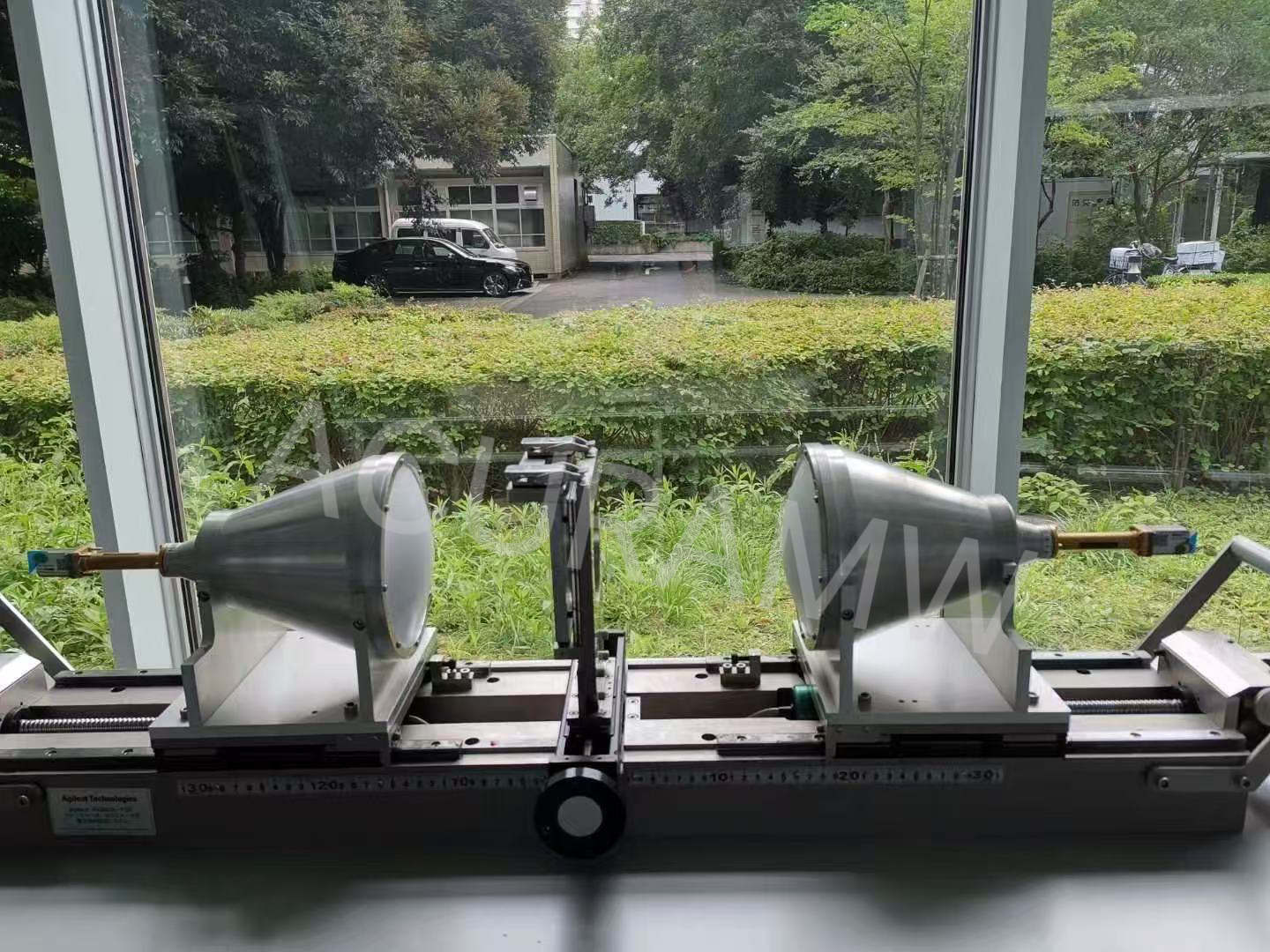
Complex Permittivity Measurement via a Focused Gaussian-beam Free-Space Setup
Edge cases
Some tasks sit between. For phased arrays, I sometimes start with a general lens horn for pattern scans, then swap to a focused lens for element-level probing. In lossy material tests, I keep a general lens horn when I need area averaging, not peak.
| Scenario | Best choice | Why |
|---|---|---|
| Quiet-zone creation (0.5–2 m) | General lens horn | Uniform field over area |
| Compact RCS/EMC pre-compliance | General lens horn | Collimated beam, lower sidelobes |
| Dielectric panel, tile, coupon testing | Spot-focusing lens horn | High local field on small sample |
| mmWave handset/module OTA | Spot-focusing lens horn | Better SNR at DUT |
| NDT/thickness/defect localization | Spot-focusing lens horn | Spatial resolution at focus |
How do I choose the right type of lens antenna for my application?
Choice feels messy at first. I now use a short checklist. It keeps me honest and saves setup changes later.
Define your field size and tolerance, your DUT size, and your available range length. If you need uniform area, pick general. If you need high local field on a small target, pick spot-focusing.
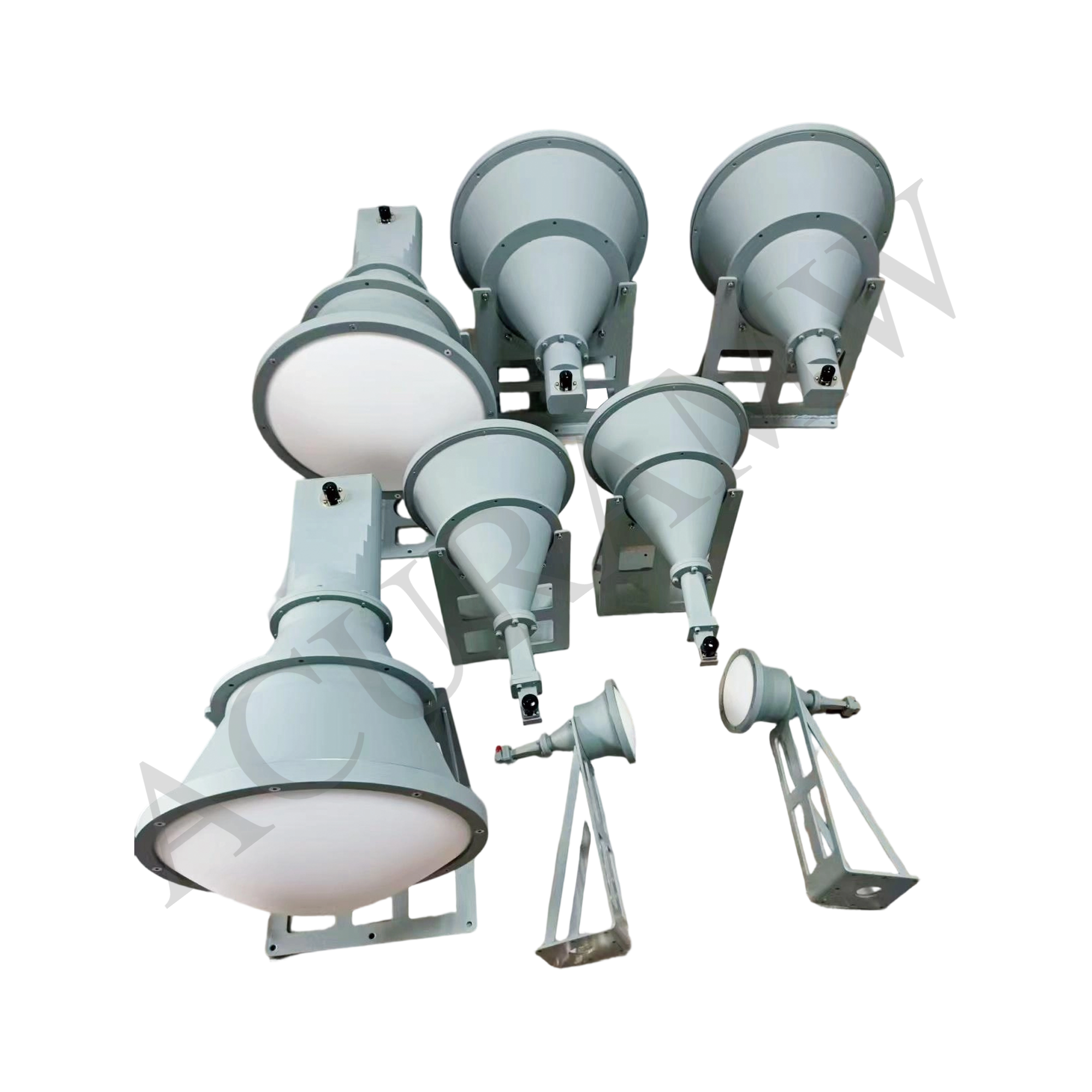
Spot-focusing-Lens-Horn-Antenna-Series
Define the field
I write down the target zone size, amplitude ripple, and phase flatness. I note the frequency band and polarization. I specify the minimum on-axis gain or field level. This sets the needed aperture. With this, the general lens horn often meets area specs with less power.
Check constraints
I measure the available distance from antenna to DUT. I check if I can hold a tight focal standoff. I list power limits, thermal limits, and scan mechanics. If the DUT is small and I can control position within a few millimeters at mmWave, spot focusing becomes attractive.
Decide
I map the requirements to a choice. If area uniformity dominates, I pick general. If peak field and spatial resolution dominate, I pick focused. When in doubt, I simulate both with a simple Gaussian beam model and then validate with a near-field scan. This two-step flow has saved me many times.
| Requirement | Metric/threshold | Preferred type | Note |
|---|---|---|---|
| Area uniformity over >0.3λ zone | ±1.5 dB, ±20° phase | General lens horn | Easier setup, wider quiet zone |
| Peak field on small target (<5λ) | Max E-field at spot | Spot-focusing lens horn | Less amplifier power needed |
| Limited range length | <3 m at cm-wave | General lens horn | Collimation beats bare horn |
| Tight placement control available | ±0.05λ at mmWave | Spot-focusing lens horn | Keeps focus on target |
| Sidelobe sensitivity high | <−20 dB requirement | General lens horn | Chokes/absorbers help further |
Conclusion
Choose general lens horns for uniform zones. Choose spot-focusing for tight, strong spots. Define field needs first. Check distance and alignment. Then decide with a quick test.
If you interested to know more on Lens Horn Antenna or Spot-focusing,just be fee free to visit our website https://acuramw.com or contact by [email protected]

